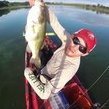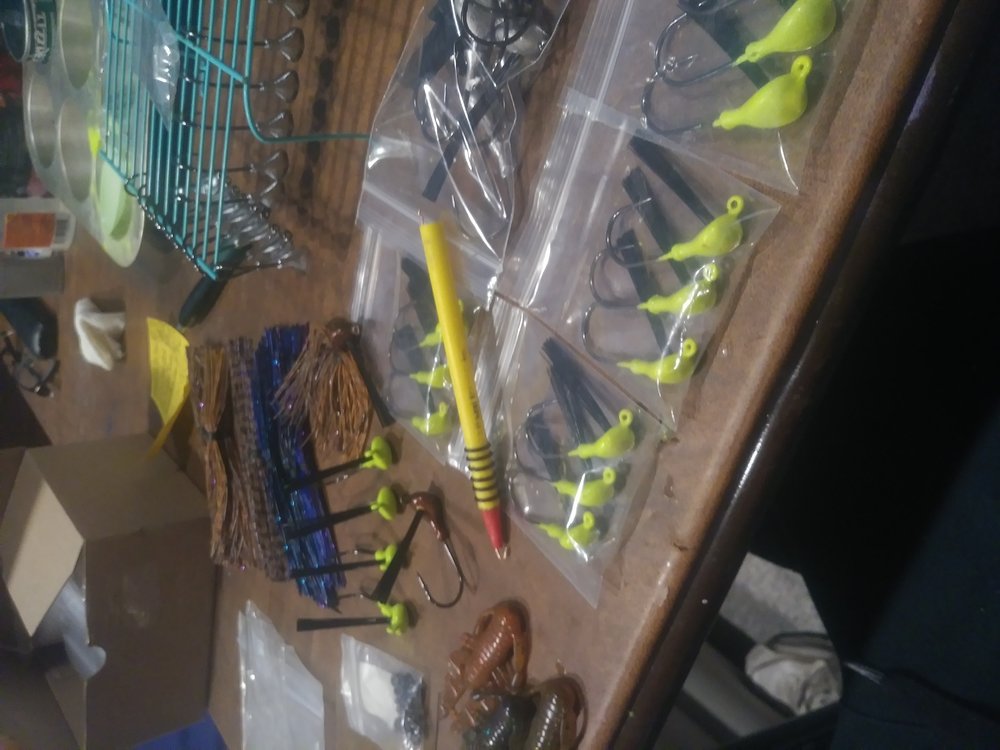Search the Community
Showing results for tags 'diy'.
-
Is any one know things in bio plastic, i have some questions on a easy to make recipe i saw on another forum. I want to know how to make a gelatin based plastic non-soluble in water without the use of gelatinizing oil, I am asking because gelatin is not a true plastic, but rather an organic compound...
-
Surely I'm not the first one to think of this. I am new to this site and to lure making in general, and just recently started building bass jigs from scratch and realized I had everything I needed except a skirting tool. So I came up with this simple solution with an ink pen. Used a piece of copper...
-
Hey community, This week's formula will be a plastisol, I would recommend this recipe for light fresh water fishing, and less rugged underwater terrain. I would say to use dye normally on this recipe since it contains a dye solvent factor now as paraffin oil coating with fish oil. Please feel free t...
-
Hey Community. This week's formula will be a plastisol, I would recommend it to fish in freshwater as this formula might stiffen out in ocean waters or possibly partially dissolve. It would good to sink in in the fresh water and might have a very weighty action in your water so I would recommend it...
- 4 replies
-
- recipe
- soft plastic
-
(and 2 more)
Tagged with:
-
This is not a new formula, but does contain different additives for many different applications, (including for flexible plastisols or polysols). Here have the link - http://www.hanserpublications.com/SampleChapters/9781569905432_9781569905449 PVC Additives Schiller SAMPLE PAGES.pdf Also I will...
-
Hellow fellow anglers, Been a while since I've been on here. My buddy asked me to make another video I thought I would share this video for creating nightcrawler harnesses. I was thinking about using floats with it but don't have any. I only pull these out when the fish slow down burying them...
- 3 replies
-
- 1
-

-
- diy
- livebait rigs
-
(and 1 more)
Tagged with:
-
Hey guys, Last weekend I was going through some of my trolling spinners. My buddy has asked me why I had so many of these "harnesses" as he called them. I told him what they are then showed him how to make them. After getting a bunch more questions he asked me to create a basic video to use....
-
Lure turner: build a pegboard L frame on 1-1/2 by 1-1/2 frame. Make it about 30" high on the end and 20" high on the front(pic3). Mount microwave or similar geared motor (plenty in the dump) to work desk about 28" high. Cut a section of swim noodle cut to fit in between motor and end of box. Glue a...
-
Hey guys, I figured this would be the perfect place for me to reach out to you guys who make soft plastic baits. I am a senior Industrial Design student at Wentworth Institute of Technology in Boston, MA conducting research for my senior thesis project. My goal is to research the methods o...
- 6 replies
-
- soft plastics
- plastisol
- (and 5 more)
-
Tips for Choosing Spinnerbait Blades Slow Willow Spinnerbait Blades Slow Willow blades are the same length, width and exact oval shape as standard willow blades. All the dimensions of standard Willow and Slow Willow blades are identical - except the Slow Willow has much less concave/convex...
- 8 replies
-
- spinnerbaits
- tips
-
(and 4 more)
Tagged with:
-
Has anyone made their own Alabama rigs? If so, could you add a picture of your DIY Alabama Rig(s) and tell how and why did you do to make your own Alabama rig the way that it is. I'm personally making concepts of a possible DIY Alabama rigs, and I was looking if anyone else in TU has made ones. Keep...
-
There are flutter spoons from companies like lake fork and Strike King that cost a hefty $7-$10 for a piece of shiny metal with a possible paint job on it that can snag quite easily....Is there a way to make these huge spoons without the huge dent in the wallet?? What I am wanting to do is to make o...
- 7 replies
-
- flutter spooon
- diy
-
(and 2 more)
Tagged with:








